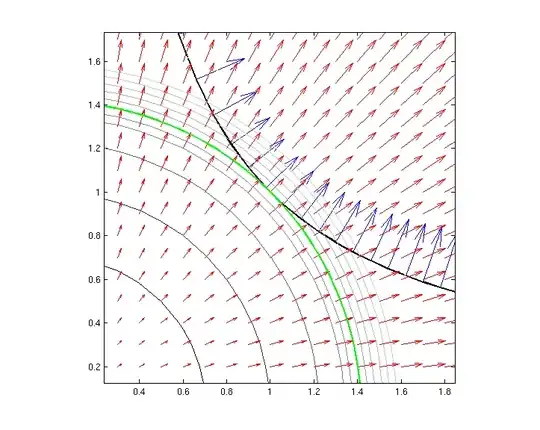A Single Constraint
Suppose I want to maximise $f(x,y)=x^2 y$ subject to constraint $g(x,y)=x^2 + y^2 = 1$.
Geometrically, we can say that from a contour plot, $f$ is maximised under the constraint at the point where the level of $f$ is tangential to $x^2+y^2=1$. This would look something like this: 
We'll call the position of the tangent, where the thick black line meets the thick green line, $(x_m,y_m)$.
What can be observed is that the gradient of $f$ at this point and the gradient of $g$ at this point, are proportional. Hence, we introduce the Lagrange multiplier, $\lambda$, a constant of proportionality for this relation:
$$\nabla f(x_m,y_m) = \lambda \nabla g(x_m,y_m)$$
From this we get a system of equations and solve for the maximum.
Now that was fine, and the idea of $\nabla f$ being proportional to $\nabla g$ is easy to see, with thanks to the geometric interpretation. Where I become confused is when we start adding multiple constraints.
Multiple Constraints
Suppose I have a function $f(x,y,z)=3x-y-3z$ and I'm trying to maximise/minimise this function subject to constraints $g_1(x,y,z)=x+y-1=0$ and $g_2(x,y,z)=x^2+2z^2-1=0$.
Similar to the single constraint case, part of the process of solving this would be to say that,
$$\nabla f=\lambda_1\nabla g_1 + \lambda_2 \nabla g_2$$
And indeed, I suppose we could generalise and say that if we had some $m$ constraints, that we'd have to solve $\nabla f= \sum_{i=1}^m \lambda_i\nabla g_i$.
The Problem
However, I am struggling for a geometric interpretation of this relationship between the gradient of $f$ and the gradients of the constraints. Because I'm struggling for a geometric interpretation, I'm struggling to understand what this means at all. Why is the gradient of $f$ a combination of the gradients of the constraints?
Does anyone have perspective on this?